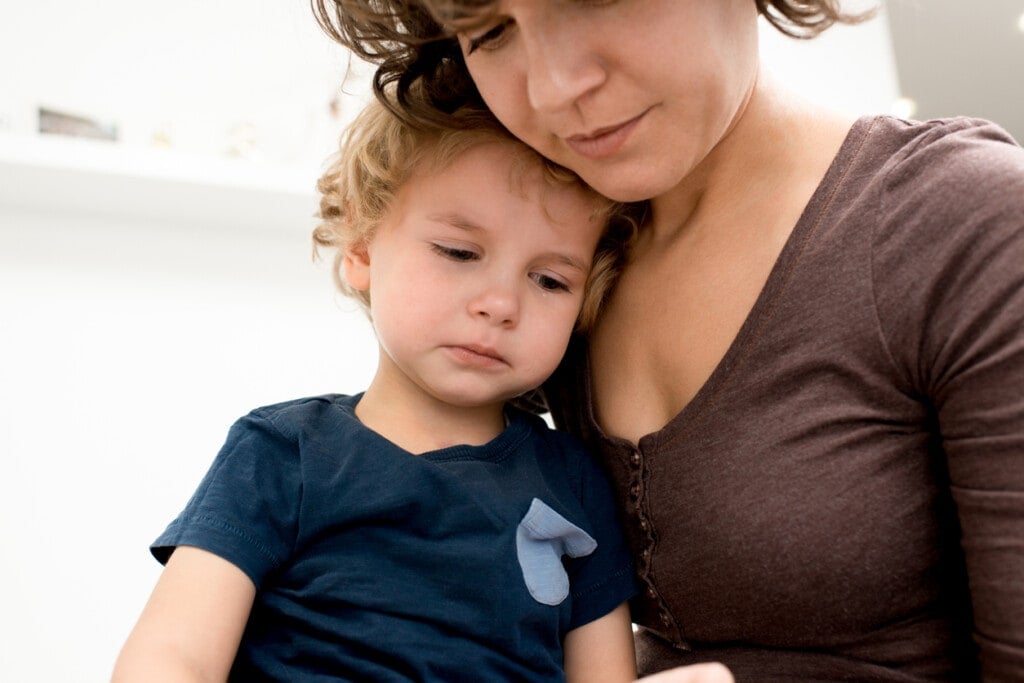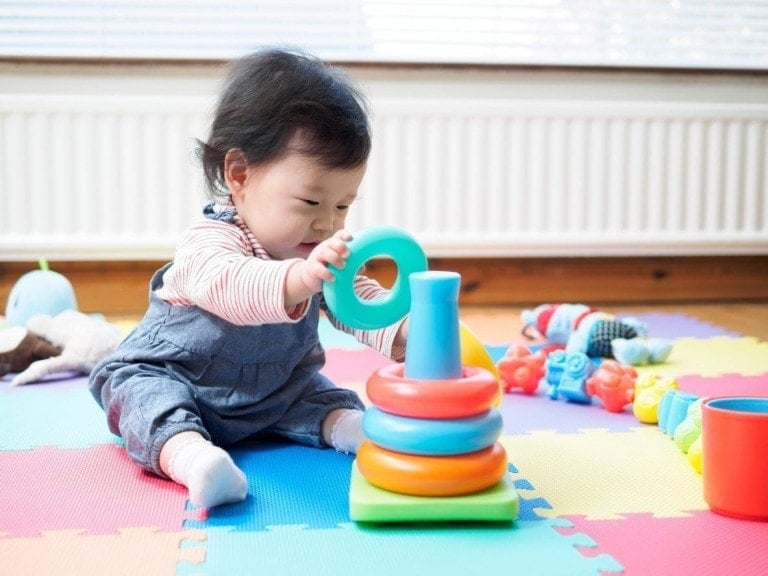Our children aren’t born knowing how to manage and regulate their feelings. Learning and trying to make sense of the world around them can be overwhelming, and this includes their emotions. They can become easily overwhelmed, so it’s crucial our kids have calming strategies and techniques they can follow.
As parents, we can accidentally invalidate our children by swooping in to fix things. Or reduce their opportunities to learn to cope when we rush in. Although our instinct is to react, we must also support our children in learning to regulate and calm themselves.
Calming Strategies and Techniques for Kids
Here are a whopping 75 calming strategies and techniques for kids from a psychologist that you can use to help your child:
1. Get Out in Nature
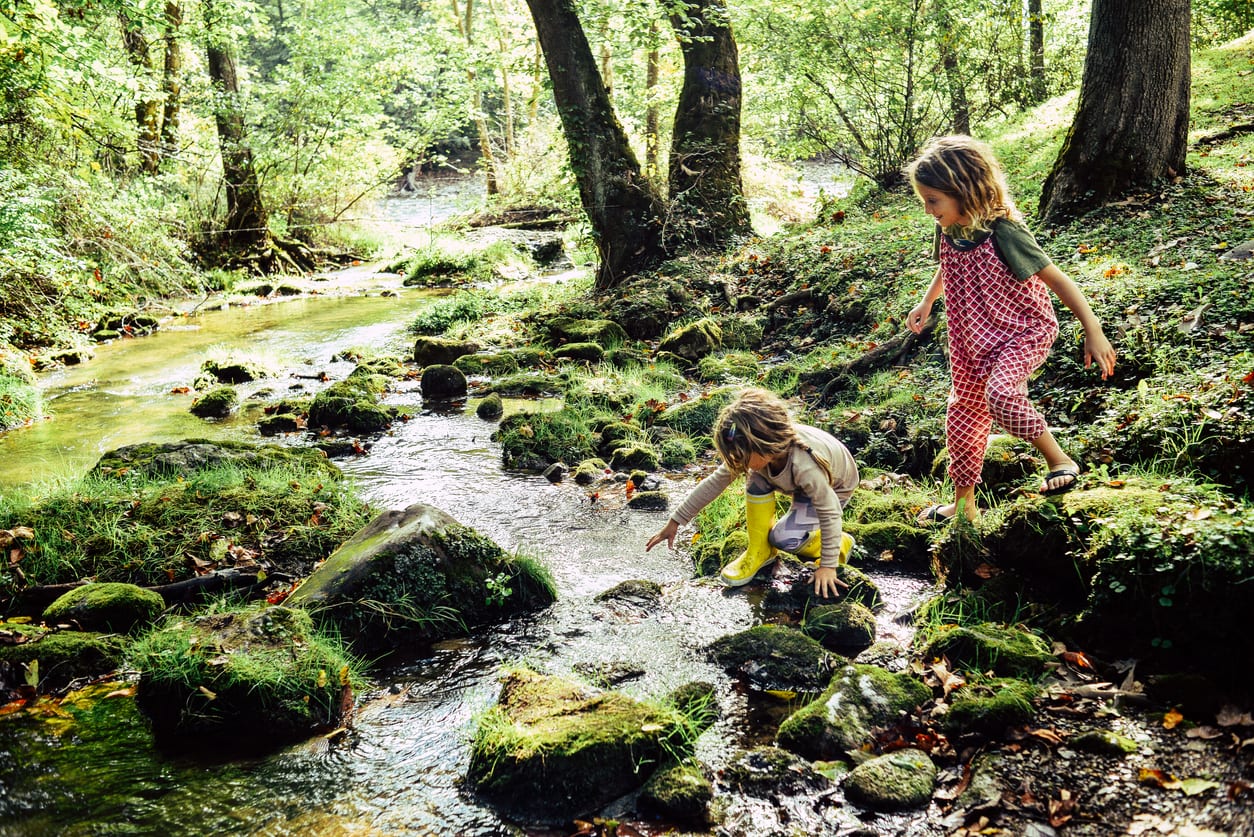
Being in nature for 20 minutes a day, or 120 minutes during the week, is shown to reduce stress and help us feel calmer.1
2. Try Visualization
Teach your child how to use visual techniques where they shut their eyes and picture a calm or beautiful place. Getting them to concentrate on the details of a beach (shells, sand, the crash of the waves, etc.) is an excellent calming technique for kids.
3. Stay Hydrated
Research indicates that dehydration is linked to mental performance.2 If your child is overwhelmed, help them get a glass of cold water (which reduces body temperature and cortisol or stress levels) and have them sip it slowly.
4. Sing Out Loud
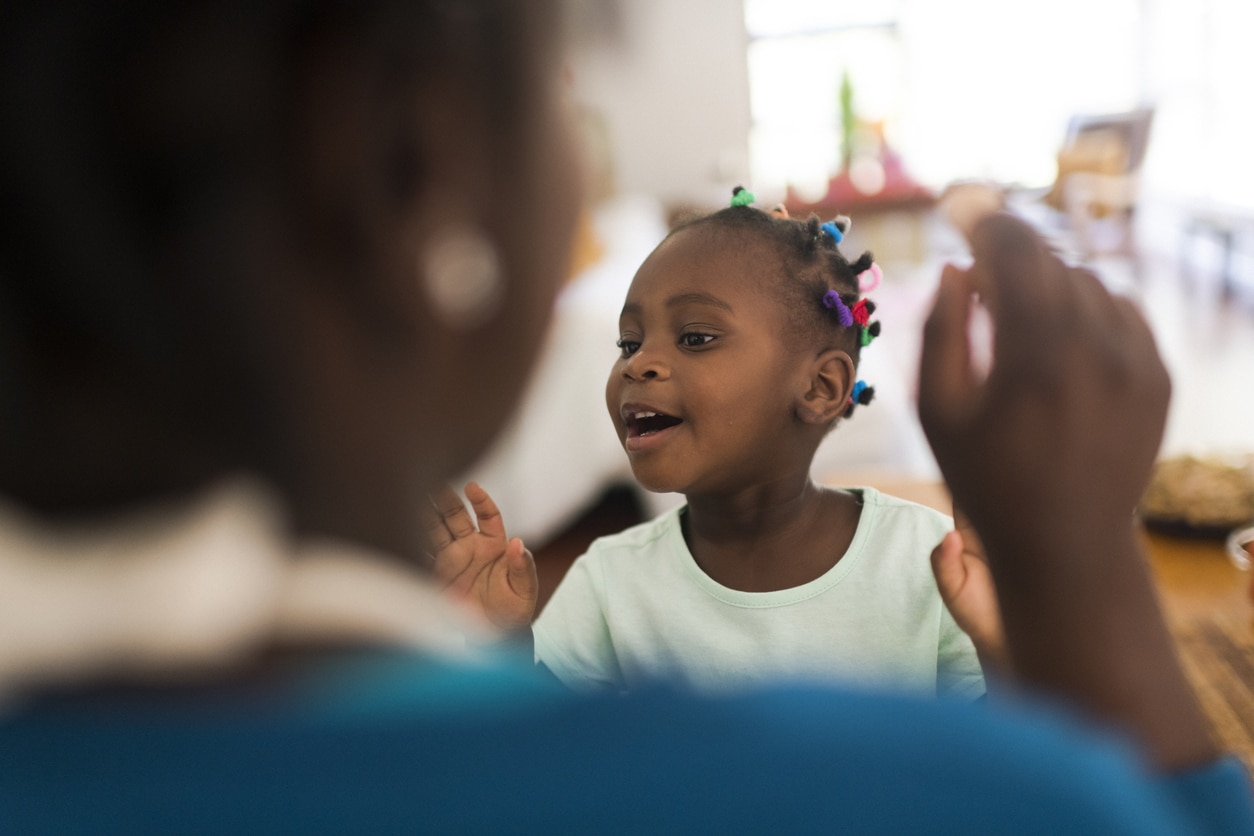
Instead of shouting, harness your child’s energy and need to get some big feelings out by getting them to sing loudly!
5. Get Out the Art Supplies
Research shows that engaging in art — drawing, coloring, etc. — helps reduce stress levels in the body (cortisol).3
6. Do Some Star Jumps
Another great calming technique for kids is if your child is irritated or frustrated, get them to move and expel some of that energy by doing star jumps.
7. Use Cold Water
When we feel worried, scared, cross, or stressed, our nervous system can kick in (fight, flight, freeze). So, washing our face in cold water, having a cold shower, and removing some clothing layers to cool our body down helps us regulate our nervous system.
8. Blow Bubbles
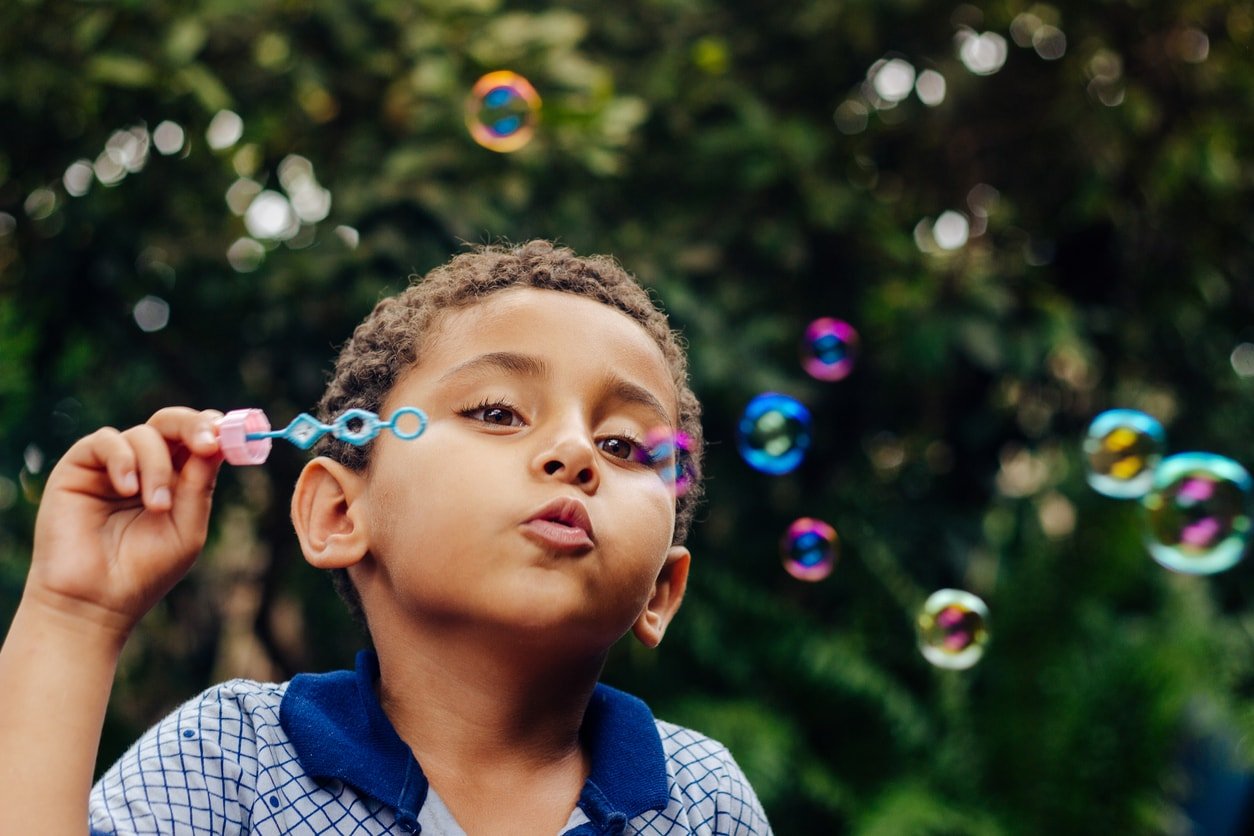
Kids enjoy watching and popping bubbles, and we can model calm breathing practices when we blow the bubbles.
9. Get Them to Describe Something to You
Another calming technique for kids is to have them describe something’s shape, colors, texture, etc. Instead of filtering information through the emotional part of their brain, you are getting them to use a different and more logical part, which helps them regain focus and be more open to self-soothing and problem-solving.
10. Name That Feeling
Naming your child’s feelings helps them make sense of their inner world, which in turn helps them feel calmer as they understand what the sensations in their body mean and why they feel that way. It also supports their connection with you, which is a win-win!
11. Watch Live Fish in a Tank
Okay, this one still has more research before it’s a proven strategy for reducing anxiety and stress. Still, many emerging studies show that after people watch a tank of live fish, they experience decreased stress, improved mood, and increased relaxation.4 So, maybe it’s time to plan a trip to the local aquarium?
12. Talk It Out
Not only does expressing their feelings help them reduce stress, but we can help them problem-solve, reduce triggers, or support them with coping strategies once we know what’s bothering them.
13. Take a Warm Bubble Bath or Warm Shower
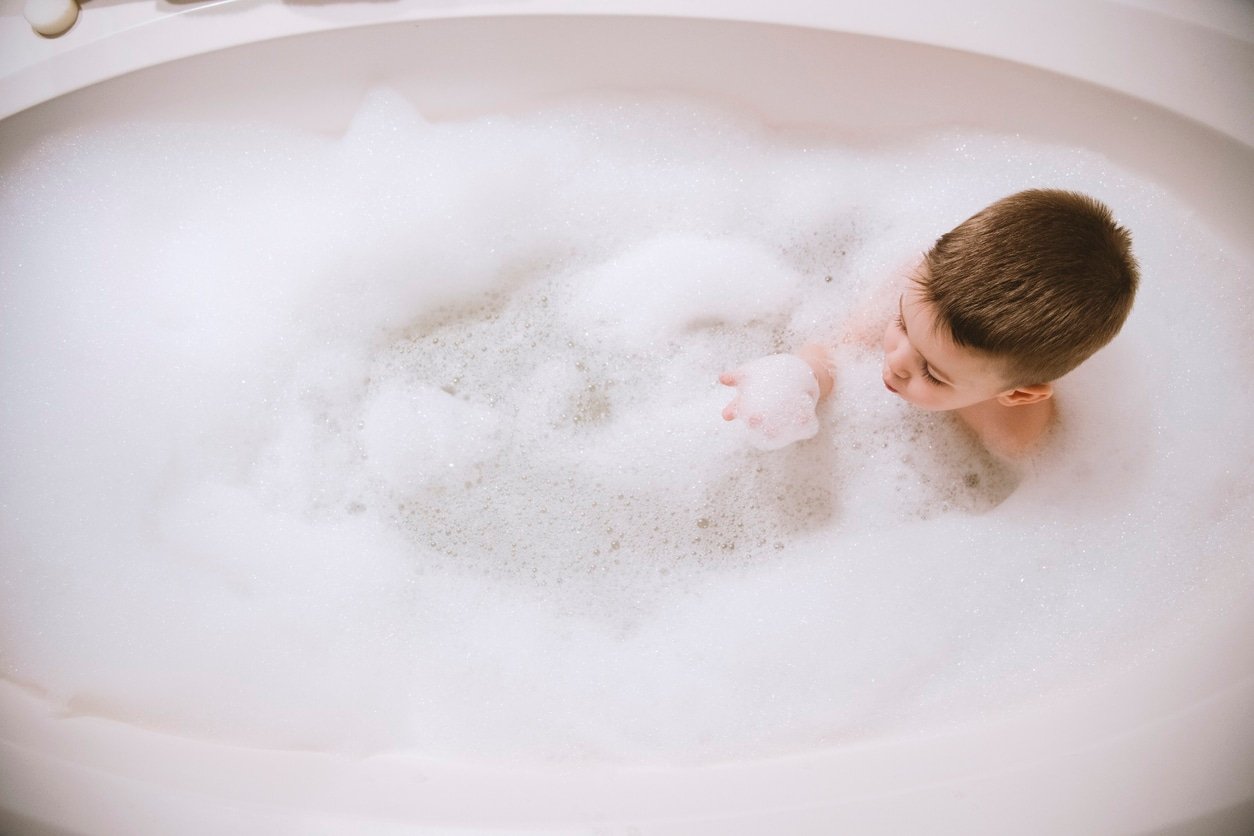
Water soothes kids, so incorporating a warm bath or shower into their routine or strategically jumping in the tub could help them calm down.
14. Focus on What They Can Control
Sometimes our little people feel overwhelmed or distressed because they are little people. And as such, they don’t have much control over things in their world, which can upset them. Try to give your child some choices (but not too many to be overwhelming) so they feel like they control more things.
15. Keep the Play Dough on Standby
There is something calming and rhythmic about rolling play dough or squeezing it. Your child expresses negative feelings positively by squeezing dough instead of hitting or kicking. It can also meet some sensory needs for different textures and touches.
16. Affirmations
These are statements of coping. When we teach our kids to focus on how they can cope rather than on what’s gone wrong, they tend to feel more in control and more capable. So, practice some key affirmations like “I can cope with big feelings,” “I can manage when things get tough,” or “It’s okay to ask for help when things are challenging.”
17. Pause
Teach your kid the art of taking a five-second pause as a calming technique. In those five seconds, their logical brain has a chance to kick in, and they are more likely to respond to things calmly.
18. Focus on Something Positive
Help improve your child’s mood by supporting them to cope with challenges and shift their mindset by helping them focus their attention on things that are working well, easily, or successfully.
19. Offer a Hug

Don’t jump straight in and hug without permission. Some children need space when stressed and overwhelmed. But remember the midwife, OB, and child health nurses saying how good skin-to-skin was for helping your baby regulate and feel calm? Use those same principles and gather your little person for a lovely, calming cuddle.
20. Rocking
Have them sit and sway or rock in a chair. The movement is rhythmic and soothing.
21. Rip Up Paper
This can help them express angry feelings in a way that won’t hurt anyone or themselves. They could rip, crumple, and ball up paper to help get some frustration out.
22. Go for a Jog
Exercise releases endorphins which fight stress. So, take them for a gentle jog in the neighborhood.
23. Give Them a Fidget Toy
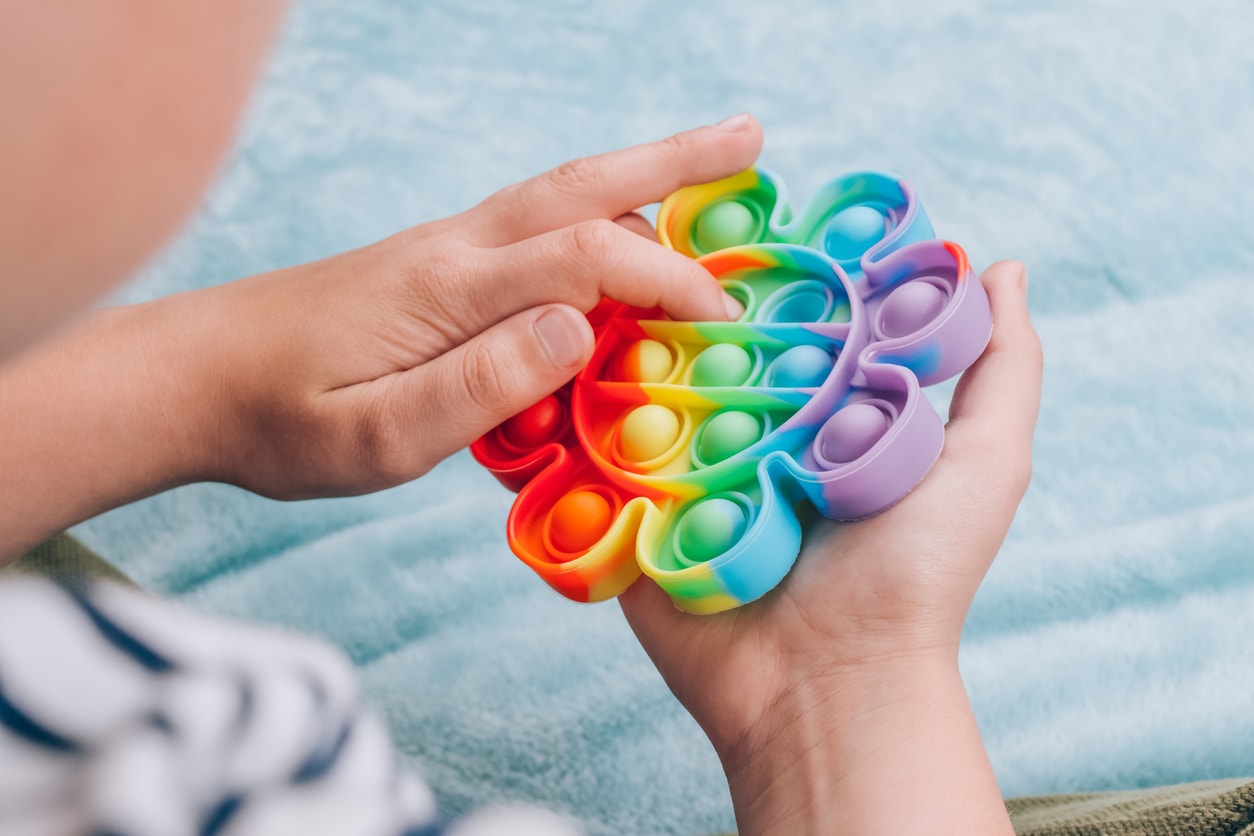
Giving them access to a fidget toy or jewelry can help expel restless energy.
24. Offer a Shoulder Massage
A bit like having a cuddle; always ask for permission. Giving a shoulder or hand massage to your child can help not only their sense of connection to you but it can help them feel relaxed and calm.
25. Introduce an Aroma or Scent
Find a scent that makes them feel happy or calm and spray or roll it on. The science is still out on how scent influences mood, but keeping some on standby can be a good idea if your child enjoys the smell or brings up pleasant memories.
26. Listen to Music
You could help them pick the music they can dance to and get extra energy out, or perhaps pick something slower to help soothe them.
27. Mindful Coloring
The calming technique of mindful coloring for kids means you get some of the benefits of art we already discussed. But the element of being mindful also helps us feel calm. Mindfulness means being in the moment and not getting caught up with future worries or past issues. So, settle your child down with a mindful coloring-in page.
28. Gratitude Attitude
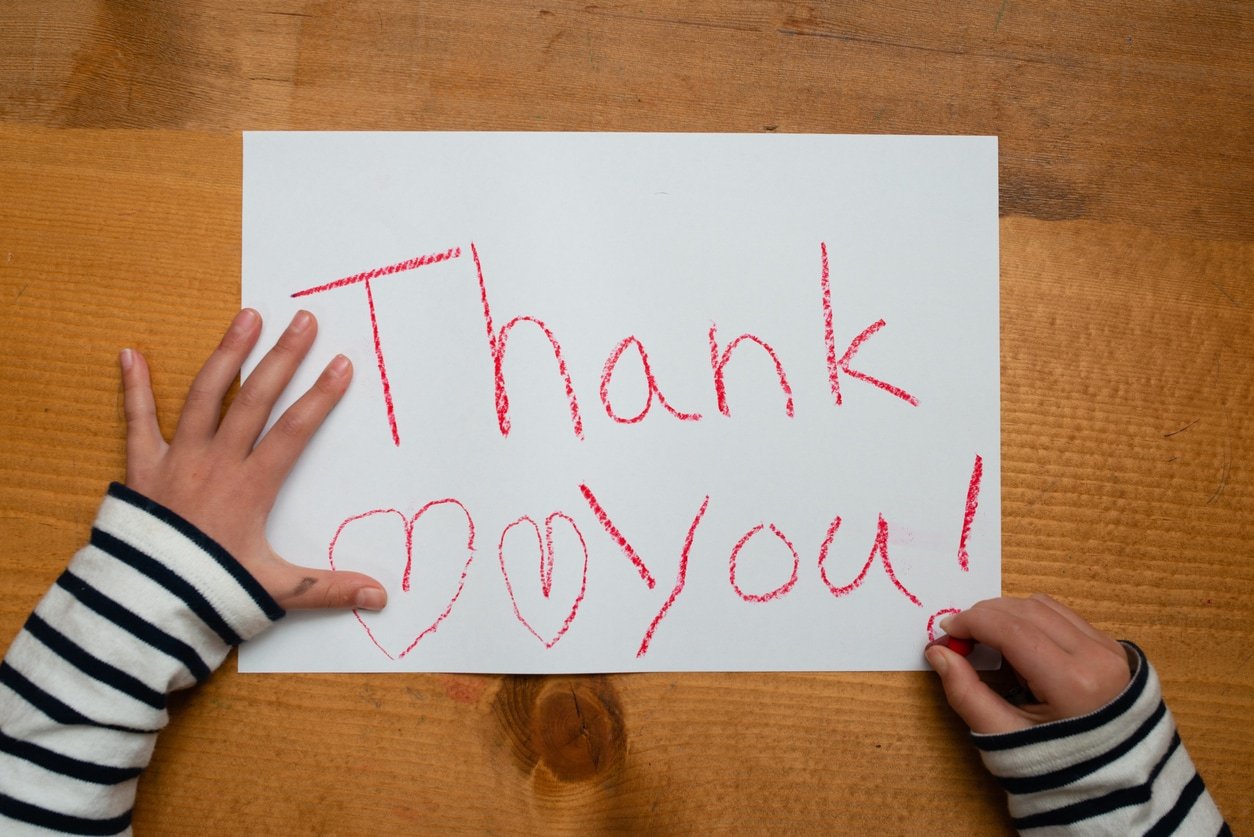
Being grateful enhances empathy and impacts bodily functions like stress, anxiety, and depression.5 So, try practicing daily gratitude with your child and expressing what you are grateful for each day!
29. Show Them How It’s Done
You are your child’s first teacher. When you feel a bit stressed or frazzled, model calming behavior and let them see how you employ your coping strategies.
30. Give Them Space
We all need space at times. Sometimes your child needs space to feel relaxed, calm, and collected.
31. Look at Fractals

What on earth is that? I can hear you ask. Fractals are patterns that repeat in nature, like a swirling succulent or seashell. Just search online, and some images will pop up to help you. Research indicates that looking at pictures of fractals reduces stress by up to 60%.6
32. Have a Toy They Can Cuddle
Knowing they can access a particular “lovey” or comfort item can be immediately soothing to your child.
33. Dance
Not only does dancing get their energy out and release endorphins, but the rhythm of dancing can also be soothing.
34. Change the Scenery
Move your child away from things that might be triggering their negative feelings.
35. Progressive Muscle Relaxation
You can search for kid-friendly progressive muscle relaxation videos on how to practice this skill. It focuses on tensing and then relaxing muscle groups which help to manage stress and tension in the body.
36. Play a Game
Change the focus and shift their attention to a different experience that will elicit a different mood, in this case, happiness. Pull out their favorite game and play with them.
37. Catch Them Escalating
When you see them escalating, please don’t wait for them to explode. As a calming technique for kids, try and intervene during the buildup. It’s much easier to intervene at these earlier stages, and they will be more capable of being logical and problem-solving. They will also be able to help themselves to move past their frustration if they can catch things early enough.
38. Knit, Crochet, or Make Jewelry
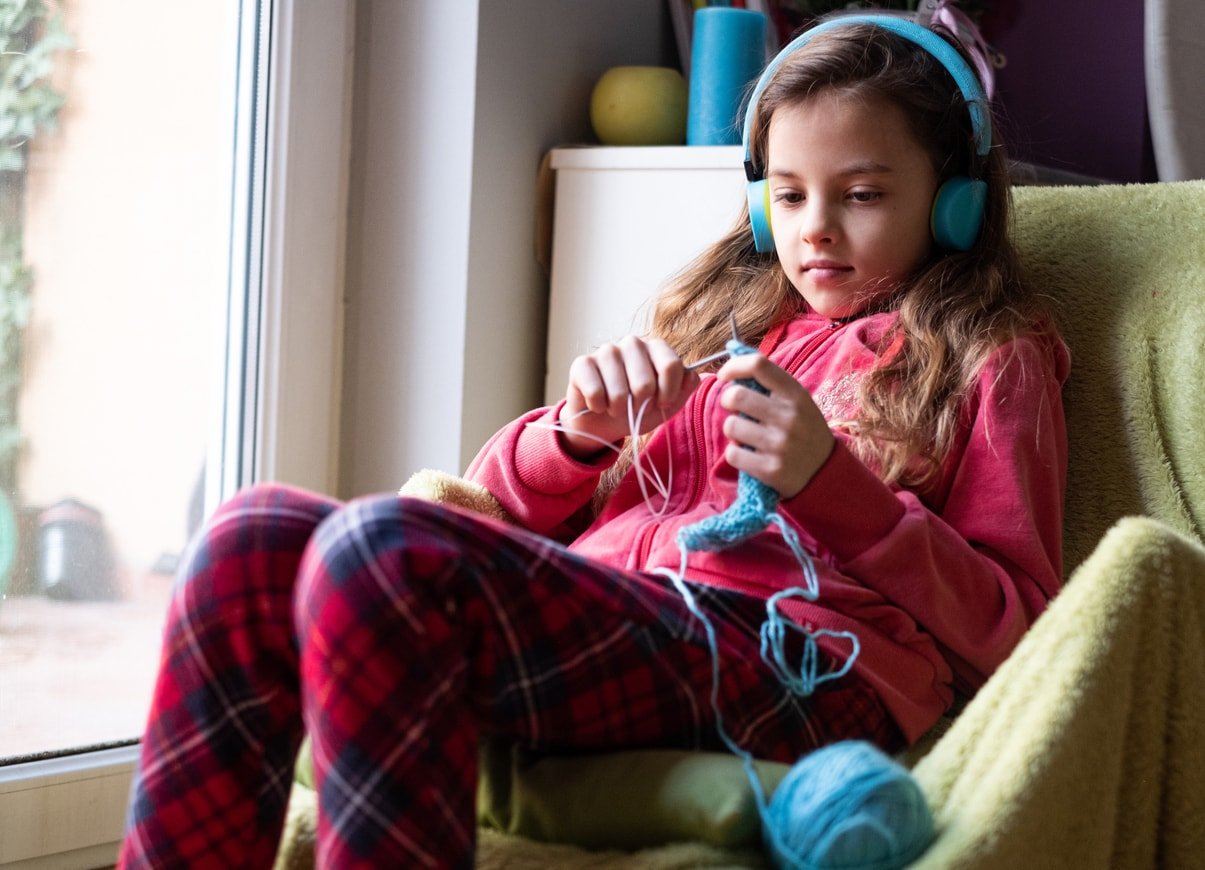
You could also thread beads. Anything with flow or rhythm can be soothing.
39. Give Them Something Neutral to Focus On
Sometimes when we get upset, our brains focus on what’s going wrong or the negatives. You can refocus their brains on something positive by giving their mind a job. This is where the focus becomes something neutral that isn’t attached to a big feeling. For example, counting red things or finding five square-shaped things.
40. Don’t Rush to Fix Things
I know it’s tempting to rush in quickly to make things right, and it comes from a place of love and wanting to look after your little person. But it takes away their opportunity to learn how to manage when things are challenging for them. (Here are some other things not to do for your kids.)
41. Ask Them to Rate Their Feelings
Not only will you gauge how big the feeling is, but it also helps your child make sense of their emotions. Then they can also better match coping strategies when they know how intense the feeling is.
42. Fill Their 5 Cups
We all have cups to fill, mastery, fun, connection, freedom, and safety. When these cups are sufficiently filled, it’s easier to cope, and we tend to be more regulated and calmer.
43. Pet a Pet
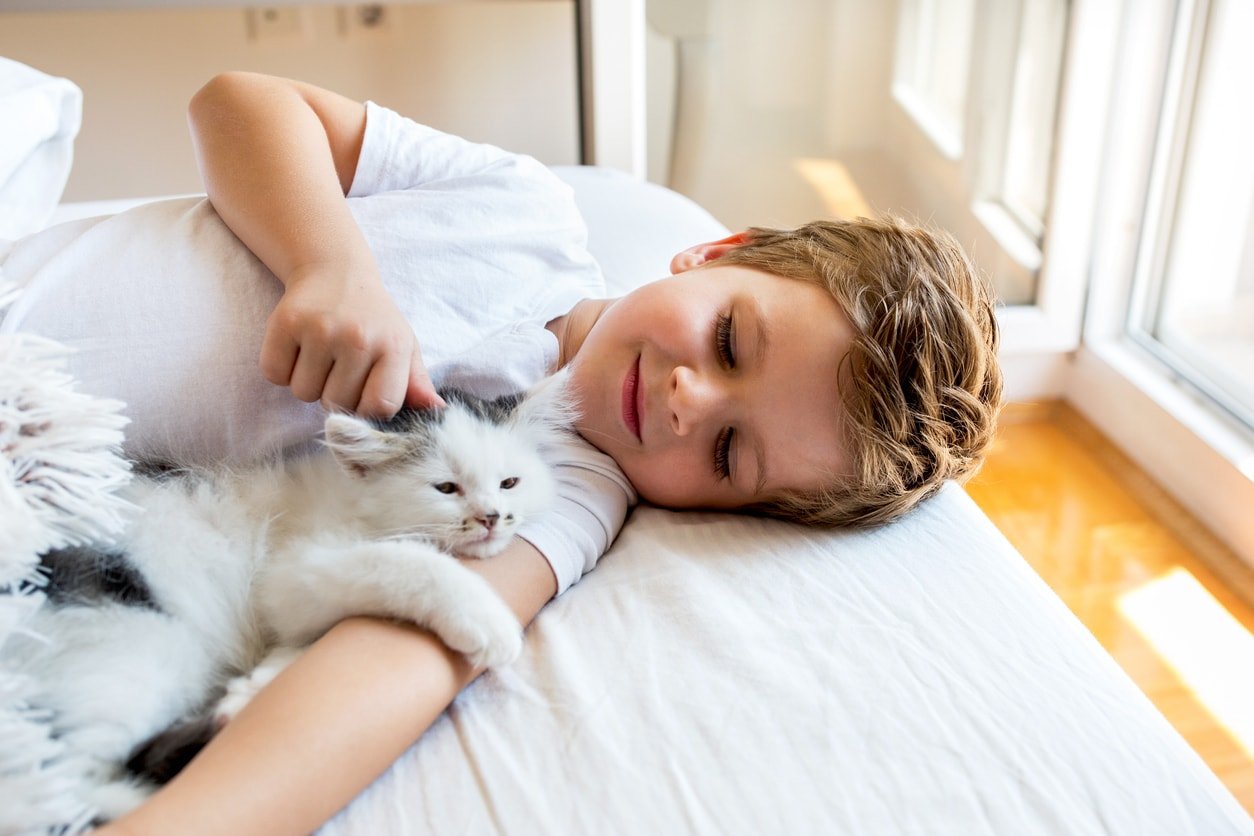
When we pet animals, it releases oxytocin, otherwise known as the love hormone.7 This can help make us feel good!
44. Use an Anger Thermometer
Draw a thermometer and color code it — green, orange, and red. Help them use the colors to understand how their emotions build up and boil over (going from green to red). You can ask them what color they feel, but you can also help them decide on coping strategies that effectively work at each stage of escalation.
45. Positive Attention
Try to avoid saying, good girl or good boy. Instead, highlight the good things they are doing well. It can improve self-esteem and confidence, boosting their mood.
46. Draw Clear Boundaries
Clear boundaries equal safety, and safety means calm. So, clear, firm, and developmentally appropriate boundaries help your child feel more regulated and peaceful.
47. Plan Transitions
When we move between activities, it can be very challenging for kids. They often don’t understand why or find it hard to stop doing what they enjoy. So, plan and prepare them for any transitions that may be coming up.
48. Try to Give Them Options
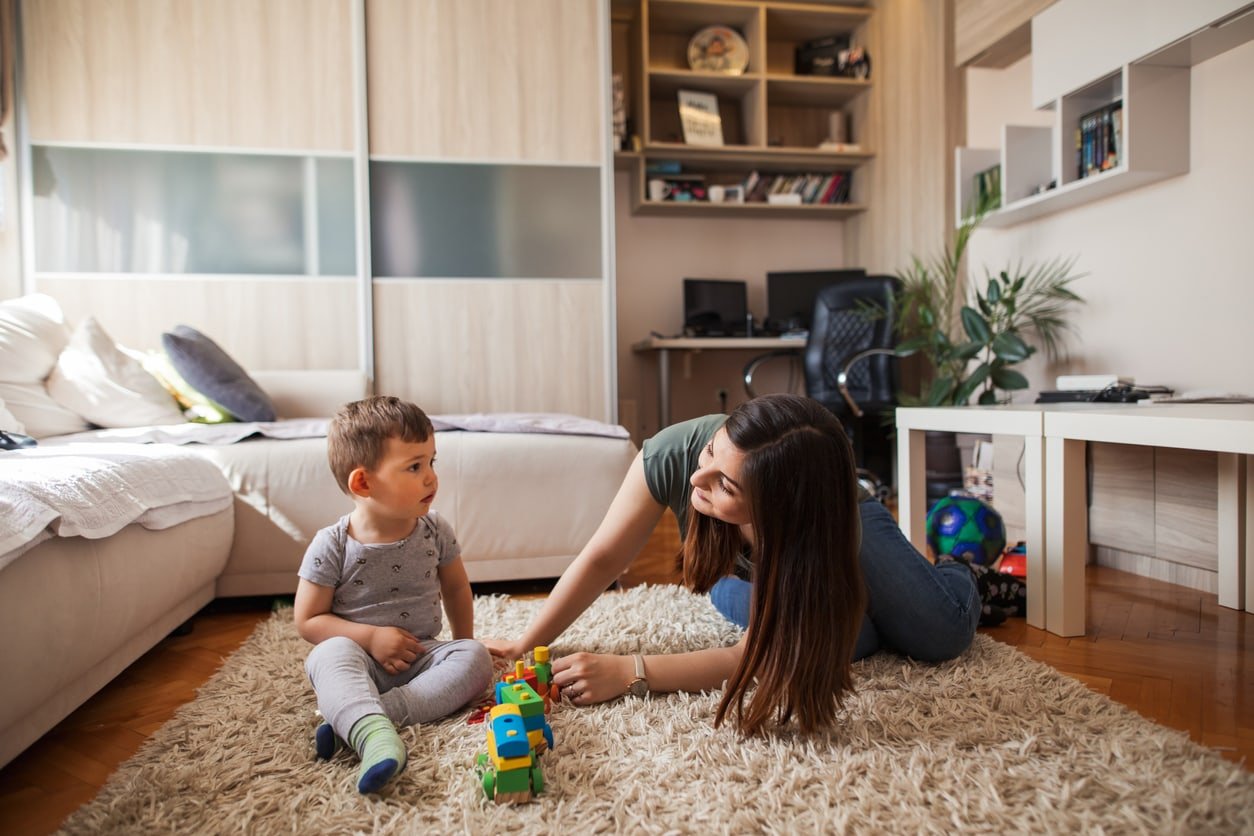
Instead of saying, “It’s time to put your shoes on,” you could try saying, “Do you want to put your shoes on before or after brushing your teeth?” These options help kids feel in control, making them feel calmer.
49. Use Advanced Planning
If you know your child has specific triggers, plan how you might cope and involve them in this process. If they get grumpy when it’s time to eat and you have an appointment simultaneously, make sure you pack snacks for them.
50. Encourage Problem-Solving
You know the old saying: Give a man a fish, and he eats for a day, teach a man to fish, and he will never go hungry. Well, it’s the same principle for problem-solving. If we fix things for our kids, they don’t learn how to solve problems. Instead, help them figure out how to cope with or manage a situation next time so they have the skills if needed in the future.
51. Give Them Uninterrupted Time with You
Quality time, not necessarily the quantity of time, is so essential for our children. Ensure you dedicate a few minutes daily to being present and engaged with them.
52. Create a Sensory Bottle
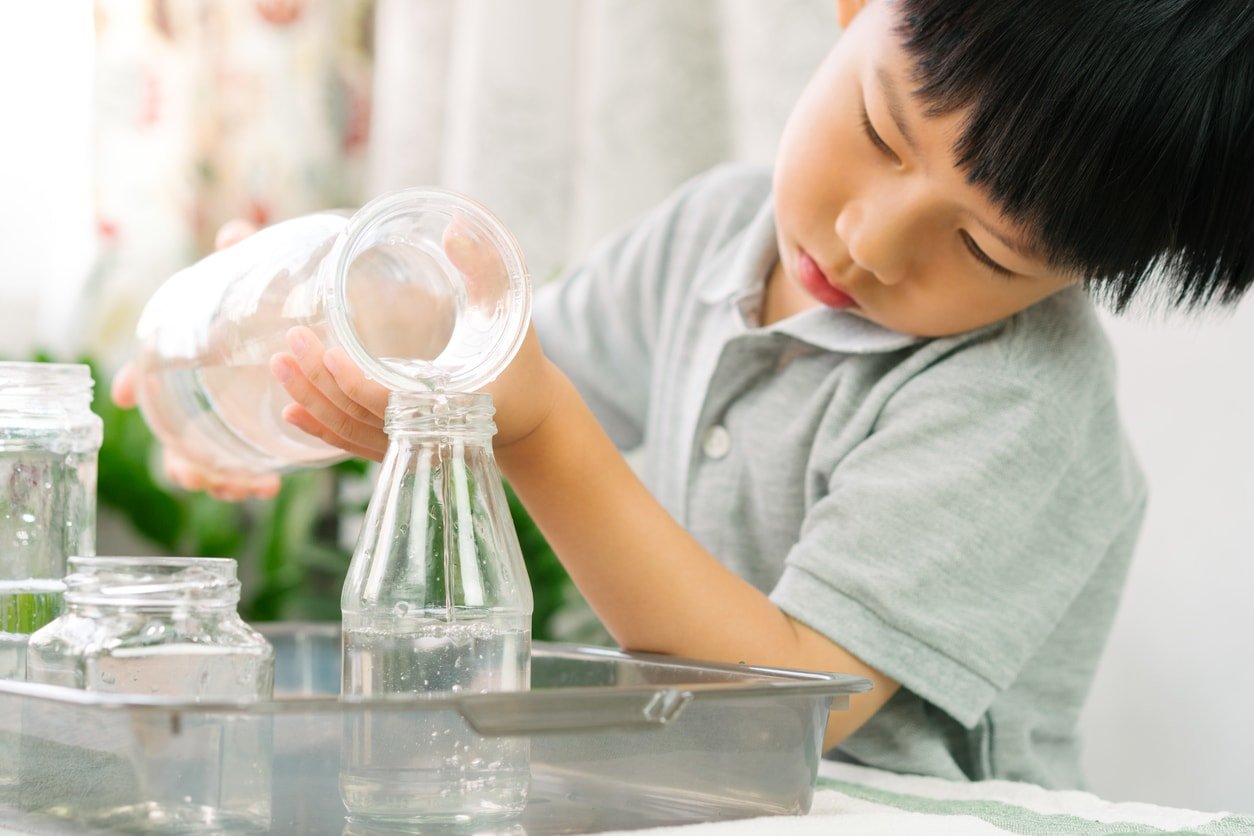
Fill a bottle with glycerin, soap, water, and “bits and bobs” (beads, sand, shells, pom poms, etc.) and seal the bottle. When you shake it, it swirls and settles and can be very soothing to watch.
53. Bounce a Ball
With bouncing a ball, you get the benefits of exercise and endorphins, but you also can get frustrations and irritations out. In addition, when you bounce a ball, the rhythm and sound can be soothing.
54. Look at Happy Photos
Hijack their mood by looking at photos which might trigger a different mindset. Perhaps they feel excitement or happiness when they look at a favorite holiday or their family.
55. Make Silly Faces in the Mirror
Inject fun and happiness by making goofy faces together in a mirror.
56. Create an I Spy Jar
Fill a jar with a few small objects to “spy,” like a marble, figurine, etc., and then top it up with uncooked rice or dried beans and seal the lid of the jar. Your child can roll it around, looking for all the different objects.
57. Write a Letter
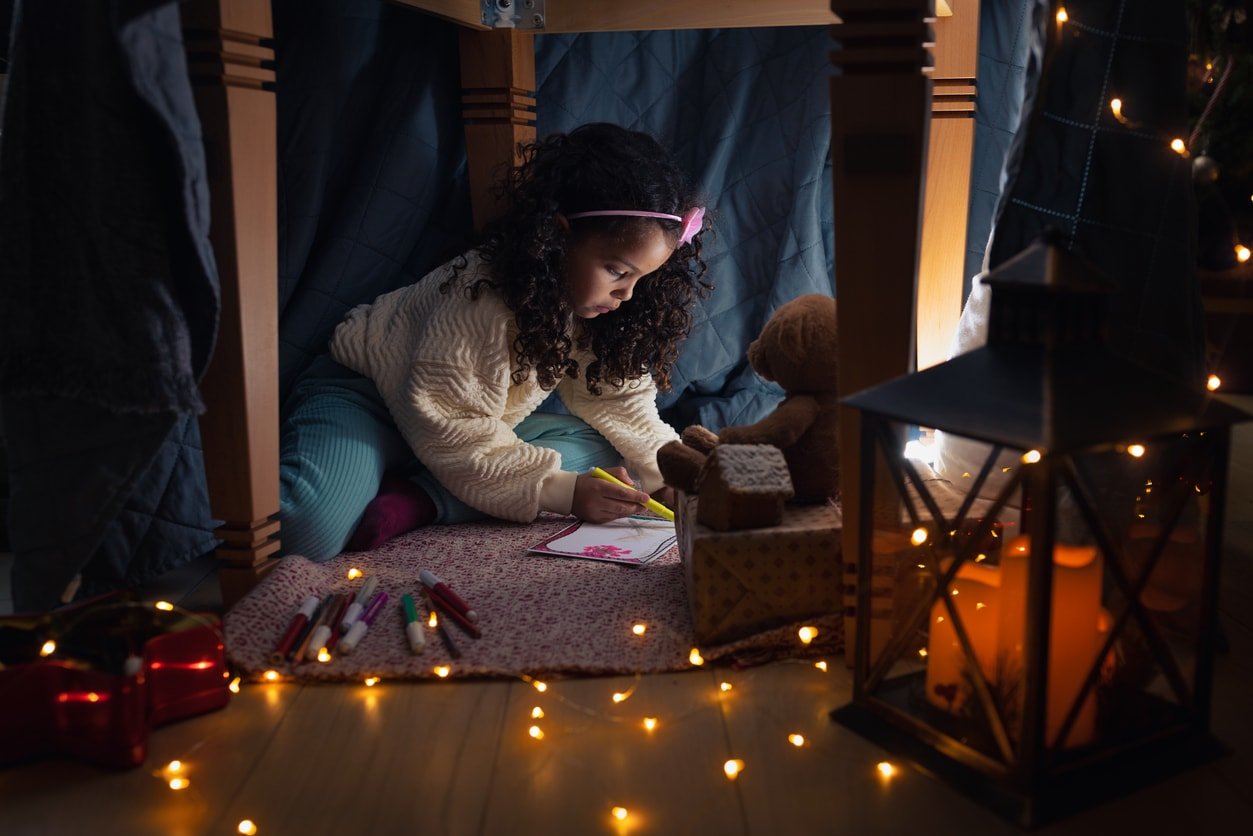
Putting words to our feelings helps us understand and manage them. Writing a letter helps us process the experience, which helps us move past it.
58. Build a Fort
Create a safe, cozy space for them to escape for some quiet time when needed.
59. Whisper
Take the volume and stress down a notch and whisper. Your child will have to focus on hearing you. This ensures they aren’t overwhelming their senses if they are already dysregulated.
60. Jump on a Trampoline
This is fun and great for little bodies to release energy through exercise and calm themselves down.
61. Draw the Feeling
Get them to color or draw what their feeling looks like. This is another activity aimed at helping them make sense of their emotions.
62. Put Headphones On
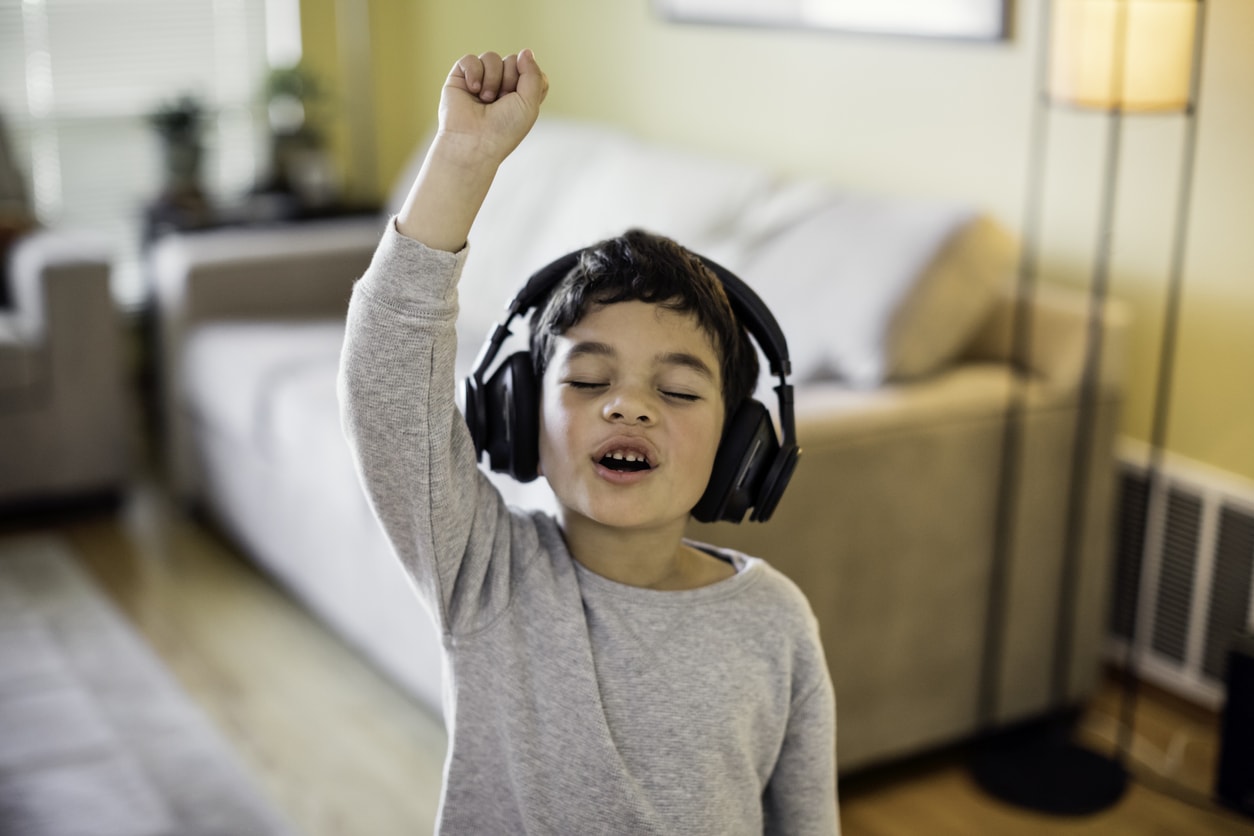
Find some noise-canceling headphones they can use if they feel overwhelmed or triggered by loud places or need some quiet time to recover.
63. Start Counting
Counting down 5, 4, 3, 2, 1 is a great mindfulness activity. It gets our kids focused on the moment instead of future worries or past issues. You can also get them to identify five things they can see, four things they can touch, three things they can hear, two things they can smell, and one thing they can taste.
64. Take a Mindful Walk
Mindfulness is excellent for calming and relaxation. Take them outside and lead them on a mindful walk to help them focus on their feet and legs moving as they step and the texture of the ground beneath their feet.
65. Count Their Heartbeats
Help them measure their heartbeat when they are stressed. Then, do some calming activities and measure again. It will help them see the impact of their actions in feeling more relaxed.
66. Grab a Weighted Blanket
A weighted blanket meets proprioception needs, which is the need for the body to know where it exists in the world. Weighted blankets put slight pressure on muscles and joints, which helps the body regulate the proprioception sense.
67. Do Yoga or Meditation
There are plenty of kid yoga and meditation videos out there aimed at kids that do a great job of helping them feel calm and connected to their bodies. They can also try a meditation device like Moonbuddy, which teaches kids breathing techniques to promote relaxation and reduce stress. Also, check out these yoga poses for kids.
68. Drink Hot Cocoa and Breathe
Helping your child learn the art of a good, calm, relaxed breath makes them imagine breathing in the yummy smell of hot chocolate and then breathing out slowly to cool it down, ready for a sip.
69. Climb Something (Safely)
Climbing releases a lot of energy and has many lovely benefits of exercise and being outdoors.
70. Say the Alphabet Backward
This stops their mind from dwelling on negative thoughts or worries for a minute. Then, their bodies have a chance to catch up and calm down.
71. Practice Sensory Awareness
For this, you can use your hand to trace their face or their hand gently.
72. Do a Body Scan
This is another mindfulness activity. Get your child to draw attention to different parts of their body. Ask them what it feels like to wiggle their toes in their socks and what their legs feel like if they are sitting in a chair. You can also draw their attention to the rise and fall of their chest as they breathe.
73. Read to Them
Reading aloud to your child is a great practice. Hearing your voice and focusing on the story and words on the page can be soothing for children.
74. Turn Off or Dim the Lights
This is another way of reducing sensory stimulation and helping them to calm and settle.
75. Remind Them That Feelings Come and Go
Sometimes children can get worked up and distressed because they feel overwhelmed by a feeling and unsure if or when it will go away. Remind them that no feeling can last forever. You might even describe the emotion as a wave that comes and goes. It helps them understand and accept that it’s natural to have big feelings and not be fearful of them.
Hopefully, this extensive list of calming strategies and techniques for kids will give you and your child plenty of things to try. Remember that it’s normal for children to experience a wide range of emotions, but it can exacerbate things if we don’t give them the tools or help them understand their feelings. Also, it’s important to know that we don’t want to get rid of or avoid their feelings. Instead, we use these activities to reduce the intensity and help them realize they can control and support themselves when things get challenging.
